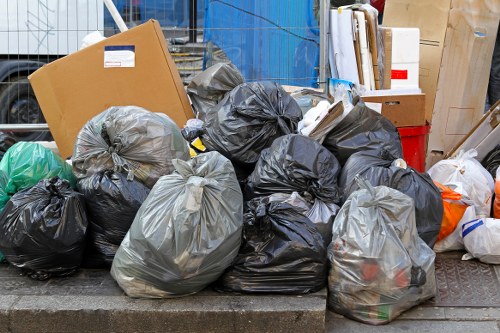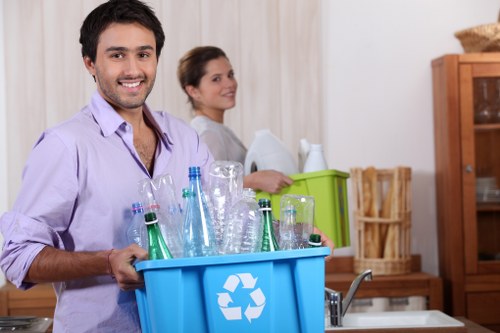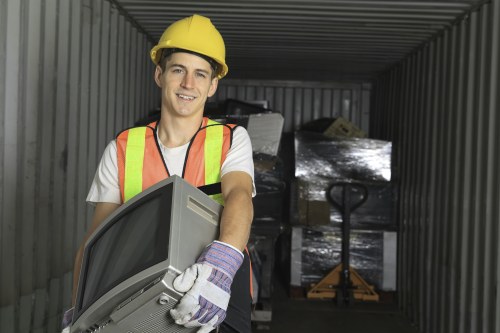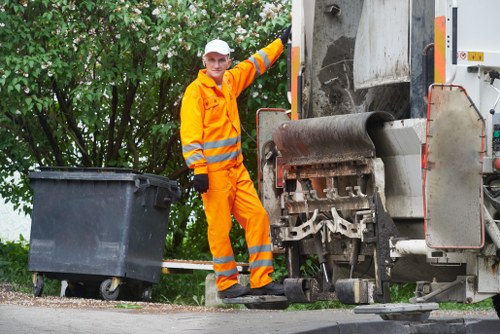Waste Clearance in Rubbish Clearance: Efficient Solutions for a Cleaner Environment

Waste clearance is a critical component of effective rubbish clearance, ensuring that our environments remain clean, safe, and sustainable. Whether it's residential, commercial, or industrial waste, managing debris efficiently helps in maintaining public health and preserving natural resources.
Understanding the nuances of waste clearance is essential for individuals and businesses alike. Proper disposal methods not only comply with regulations but also contribute to environmental conservation efforts.
In this comprehensive article, we will explore the various aspects of waste clearance within rubbish clearance services, highlighting best practices, innovative solutions, and the importance of professional assistance.

Understanding Waste Clearance
Waste clearance involves the systematic removal and disposal of unwanted materials. This process is integral to rubbish clearance, ensuring that garbage is handled responsibly and efficiently.
Key Components of Waste Clearance:
- Collection: Gathering waste from various sources.
- Transportation: Moving waste to disposal or recycling facilities.
- Disposal: Properly discarding waste in designated areas.
- Recycling: Processing waste materials for reuse.
Each component plays a vital role in minimizing the environmental impact of waste disposal.

Types of Waste
Rubbish clearance encompasses various types of waste, each requiring specific handling methods:
- Household Waste: Everyday items discarded from homes.
- Commercial Waste: Waste generated by businesses, including offices and retail stores.
- Industrial Waste: By-products from manufacturing and industrial processes.
- Hazardous Waste: Materials that pose significant health or environmental risks.
Proper categorization ensures that each type of waste is managed appropriately, enhancing overall efficiency.

Best Practices in Waste Clearance
Adopting best practices in waste clearance is essential for effective rubbish management. Here are some strategies to consider:
- Segregation: Separating waste into different categories for recycling and proper disposal.
- Regular Collection: Ensuring timely waste pickup to prevent accumulation and associated issues.
- Use of Eco-Friendly Materials: Minimizing non-recyclable waste by opting for sustainable alternatives.
- Public Awareness: Educating communities about the importance of waste management.
Implementing these practices leads to a more streamlined and environmentally friendly waste clearance process.

Innovative Solutions in Rubbish Clearance
Technological advancements have introduced innovative solutions that enhance waste clearance efficiency:
- Automated Collection Systems: Utilizing sensors and smart technology for optimized waste pickup.
- Recycling Technologies: Advanced machinery that improves the sorting and processing of recyclable materials.
- Biodegradable Products: Developing materials that break down naturally, reducing landfill burden.
- Waste-to-Energy: Converting waste materials into usable energy sources.
These innovations not only improve the effectiveness of rubbish clearance but also contribute to sustainable environmental practices.

The Importance of Professional Waste Clearance Services
Engaging professional waste clearance services offers numerous benefits:
- Efficiency: Experienced teams ensure timely and effective waste removal.
- Compliance: Professionals are well-versed in local regulations and disposal laws.
- Safety: Proper handling of hazardous and non-hazardous waste minimizes health risks.
- Cost-Effective: Reduces the need for personal arrangements and mitigates potential fines.
Choosing a reputable waste clearance provider is essential for seamless rubbish management.

Environmental Impact of Waste Clearance
Effective waste clearance significantly impacts the environment:
- Reduction in Pollution: Minimizes soil, air, and water contamination.
- Conservation of Resources: Promotes recycling and reuse, conserving natural resources.
- Waste Minimization: Decreases the volume of waste sent to landfills.
- Climate Change Mitigation: Proper waste management reduces greenhouse gas emissions.
Proactive waste clearance efforts contribute to a healthier and more sustainable planet.

Waste Clearance Process Explained
The waste clearance process involves several stages, each crucial for effective rubbish management:
1. Waste Assessment
Determining the type and volume of waste to develop an appropriate clearance plan.
2. Collection and Segregation
Gathering waste materials and separating them based on categories such as recyclables, non-recyclables, and hazardous waste.
3. Transportation
Moving the segregated waste to designated facilities for disposal or recycling.
4. Disposal and Recycling
Properly discarding non-recyclable waste and processing recyclable materials for reuse.
5. Monitoring and Compliance
Ensuring that all waste clearance activities adhere to local regulations and environmental standards.

Challenges in Waste Clearance
Despite advancements, several challenges persist in waste clearance:
- Increasing Waste Generation: Population growth leads to higher waste production.
- Limited Recycling Facilities: Insufficient infrastructure hampers effective recycling efforts.
- Improper Waste Segregation: Lack of education and awareness leads to mixed waste disposal.
- Financial Constraints: Limited budgets can affect the efficiency of waste management services.
Addressing these challenges requires collaborative efforts from governments, businesses, and communities.

Benefits of Effective Waste Clearance
Implementing robust waste clearance strategies offers numerous advantages:
- Health and Safety: Reduces the spread of diseases and minimizes accidents related to waste accumulation.
- Environmental Protection: Preserves ecosystems and prevents environmental degradation.
- Economic Gains: Creates job opportunities and promotes sustainable economic growth.
- Enhanced Quality of Life: Contributes to cleaner communities and improved living standards.
These benefits underscore the importance of prioritizing waste clearance in rubbish management plans.

Selecting the Right Waste Clearance Service
Choosing an appropriate waste clearance service involves considering several factors:
- Reputation: Look for companies with positive reviews and proven track records.
- Services Offered: Ensure the provider offers comprehensive services tailored to your needs.
- Pricing: Compare rates to find a service that offers value without compromising quality.
- Compliance: Verify that the company adheres to local regulations and environmental standards.
- Customer Support: Opt for providers that offer reliable customer service and support.
Making an informed decision ensures effective and hassle-free waste clearance.

Future of Waste Clearance
The landscape of waste clearance is evolving with emerging trends and innovations:
Smart Waste Management
Integrating technology such as IoT and AI to optimize waste collection and processing.
Circular Economy
Promoting the reuse and recycling of materials to create a closed-loop system.
Green Waste Solutions
Adopting environmentally friendly practices to minimize the carbon footprint of waste clearance.
Community Engagement
Encouraging public participation in waste management initiatives to foster sustainable habits.
These advancements aim to enhance the efficiency and sustainability of rubbish clearance efforts.

Conclusion
Waste clearance plays a pivotal role in effective rubbish management, impacting environmental health, public safety, and economic prosperity. Adopting best practices, leveraging innovative solutions, and engaging professional services are essential steps towards a cleaner and more sustainable future.
Don't let waste overwhelm your space. Contact us today to learn more about our comprehensive waste clearance services and take the first step towards a cleaner environment.